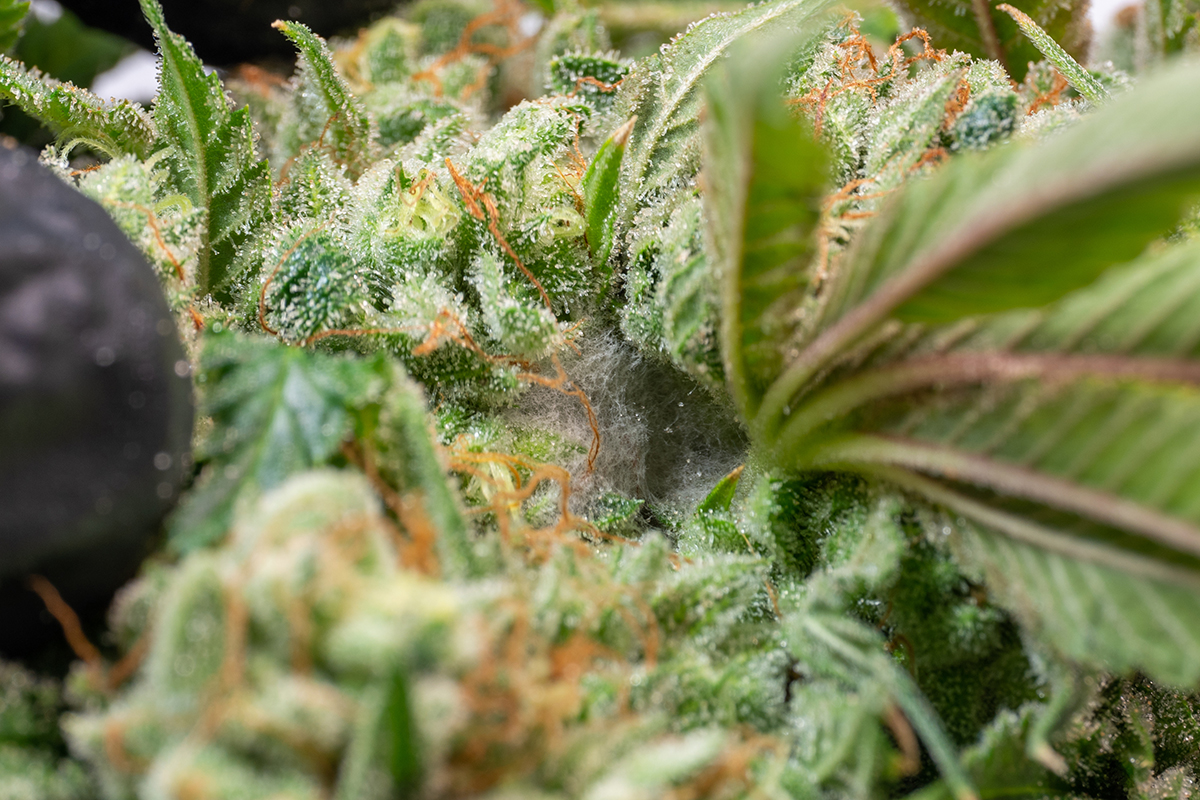Select Your Country/Region
Current Region:
 USA (EN)
USA (EN)
Choose a different country or region to see the content specific to your location
Botrytis cinerea, commonly known as gray mold or "bud rot," is a destructive fungal pathogen that affects cannabis plants. It grows well in certain conditions. These include high humidity, low airflow, and thick plant canopies. This makes it a big worry for growers.
Studies from different state universities show that Botrytis is a common and harmful plant disease in cannabis farming. Without proper management, it can lead to substantial crop losses.

Gray mold usually appears as small, water-soaked spots on leaves, stems, or buds. As the infection progresses, these areas become covered with a fuzzy gray or brownish mold. Infected plants often show signs of necrosis, with parts of the plant turning brown or black and dying off. Bud rot is a common problem caused by Botrytis. It makes cannabis flowers decay from the inside out. This often goes unnoticed until a lot of damage has happened. Regularly inspecting your crops, especially in dense plant canopies, is crucial to catch early symptoms of this plant disease.
Bud rot, or Botrytis cinerea, is caused by a fungal pathogen that thrives in certain environmental and cultivation conditions. Understanding the causes is key to preventing its devastating effects on cannabis crops. Here’s a breakdown of the main causes:
Once spores of Botrytis cinerea land on a suitable host, they need:
The fungus begins inside the bud and spreads outward, often unnoticed until the damage is severe. The infected tissue turns dark, dries out, and crumbles, releasing more spores to infect nearby plants.
By knowing these causes, growers can change their environmental controls, spacing, and cleaning methods. This helps lower the risk of bud rot in their cannabis crops.
Dosatron pumps do not directly get rid of Botrytis. However, they are very helpful in delivering nutrients and applying treatments to protect plants.
Healthy plants are more resistant to infections. Dosatron pumps allow for precise delivery of nutrients like calcium, silica, and potassium, which strengthen plant tissues and make it harder for fungal pathogens to penetrate.
Dosatron pumps can mix and distribute hydrogen peroxide solutions, beneficial microbes, or fungicides. These treatments help create an environment that inhibits fungal growth.
Spores of gray mold can travel through irrigation water. A Dosatron system can dose sanitizing agents like chlorine or peracetic acid into irrigation lines, ensuring a clean and disease-free water supply.
Dosatron’s precision ensures that all plants receive the same amount of treatment or nutrients, reducing inconsistencies that could leave some plants vulnerable to infection.